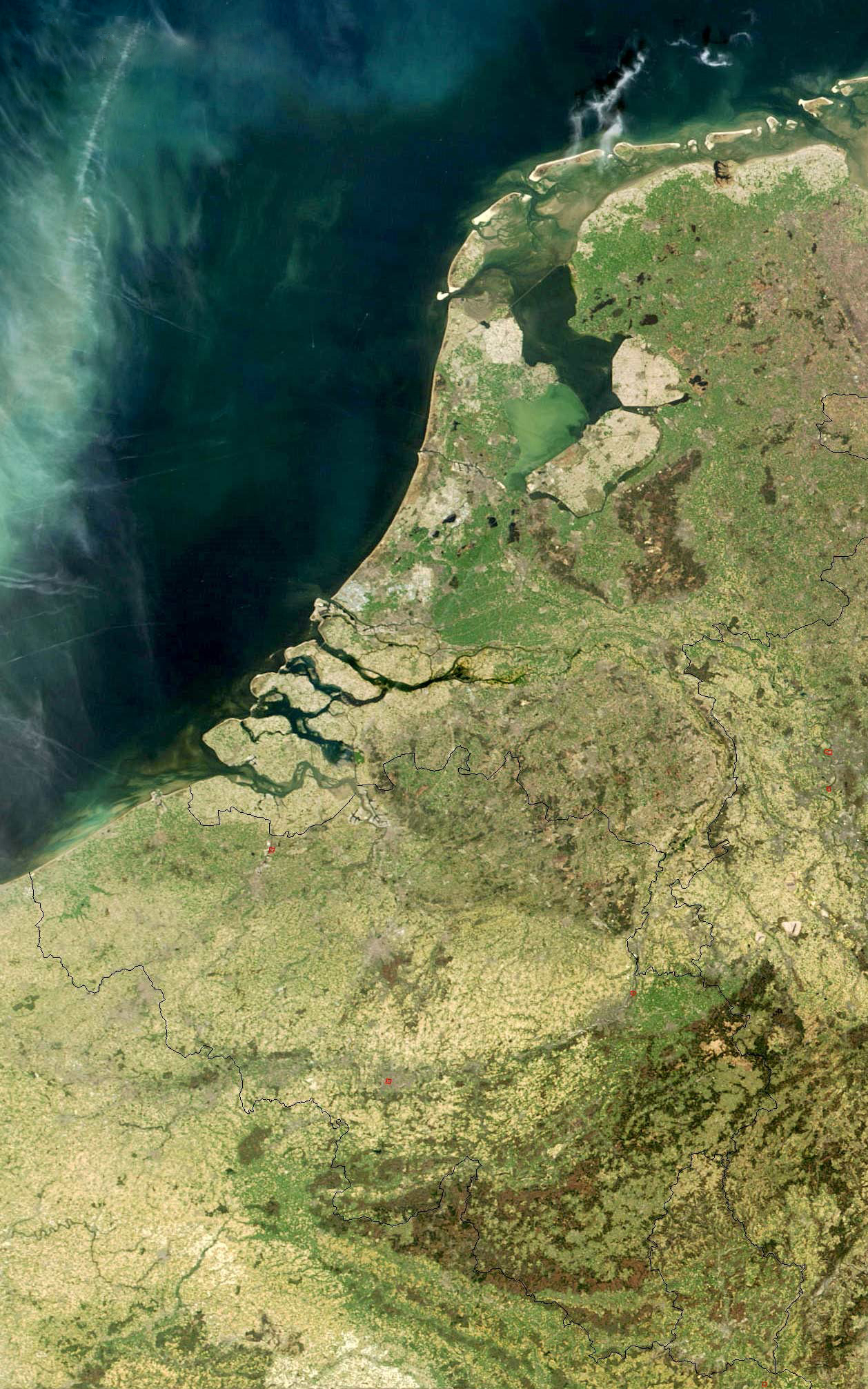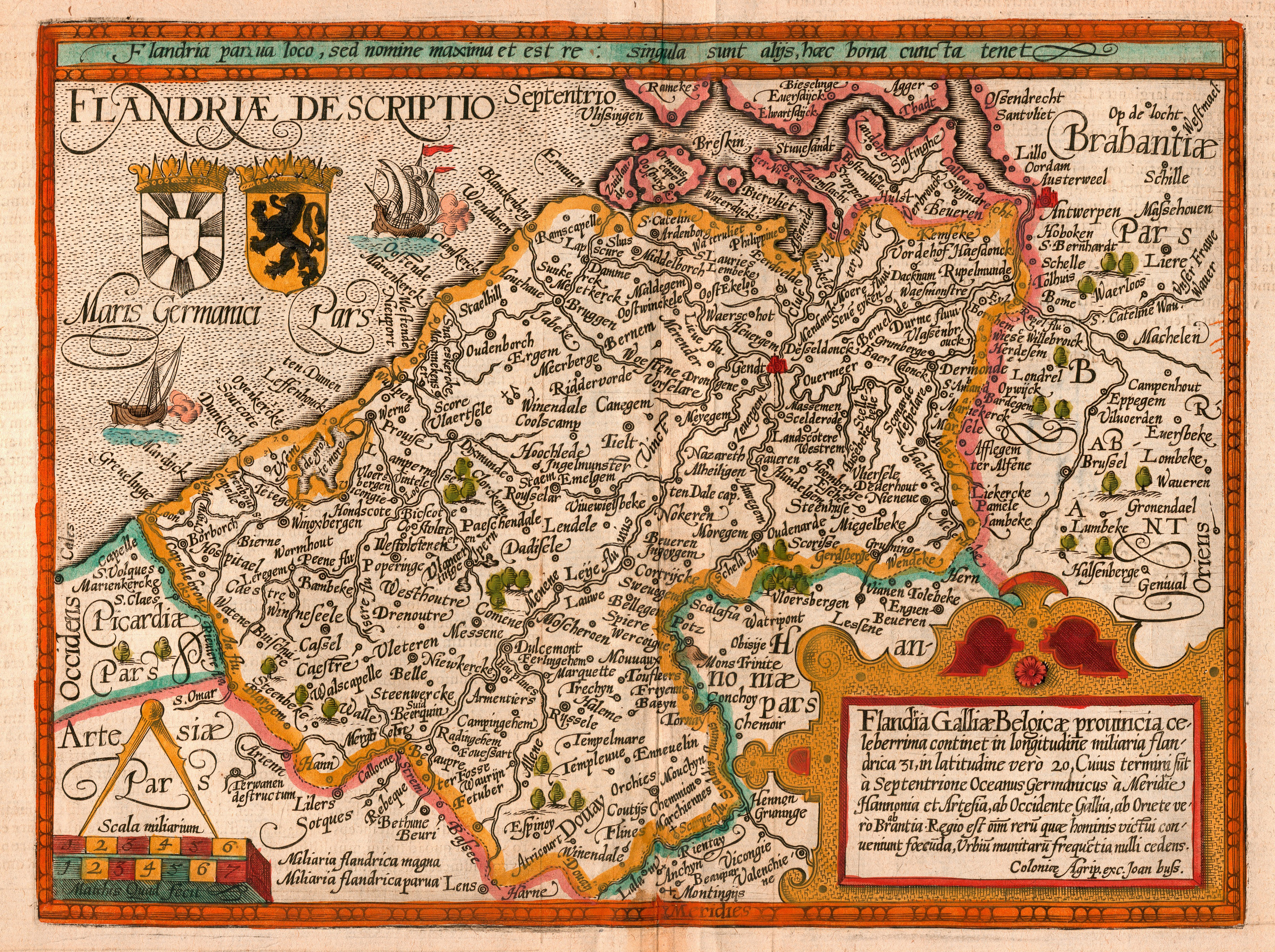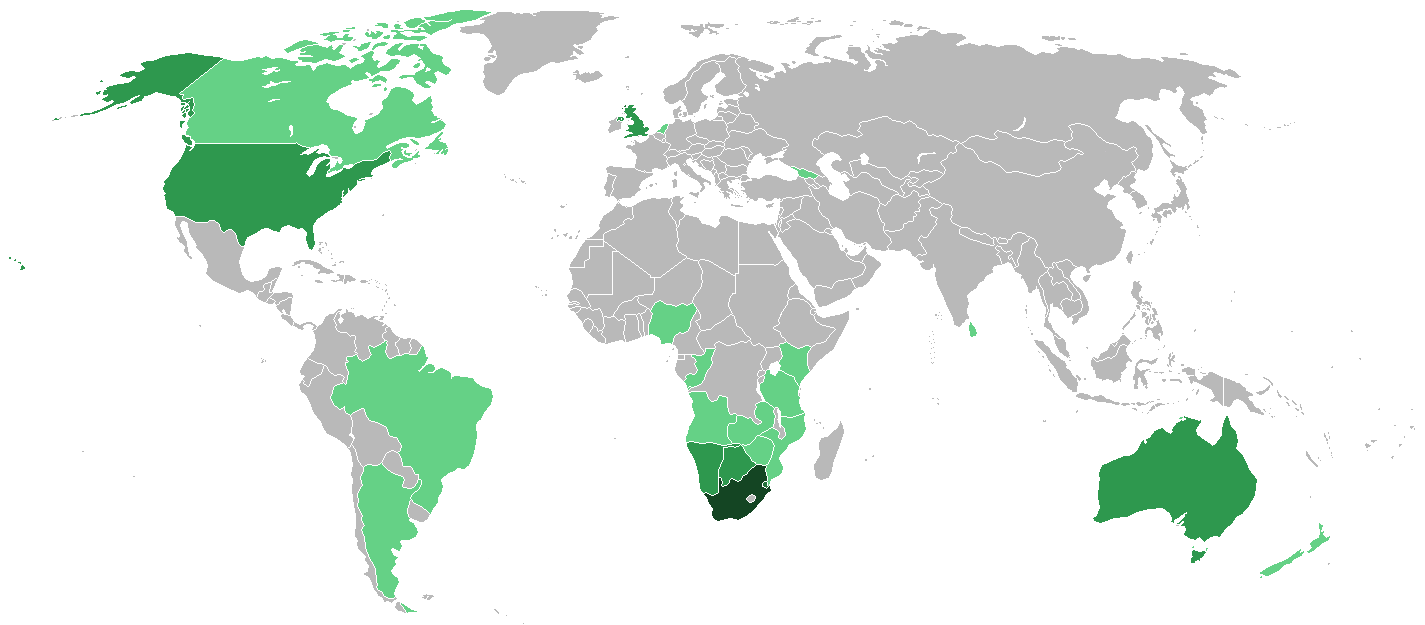|
Dutch Americans
Dutch Americans () are Americans of Dutch and Flemish descent whose ancestors came from the Low Countries in the distant past, or from the Netherlands as from 1830 when the Flemish became independent from the United Kingdom of the Netherlands by creating the Kingdom of Belgium. Dutch settlement in the Americas started in 1613 with New Amsterdam, which was exchanged with the English for Suriname at the Treaty of Breda (1667) and renamed New York City. The English split the Dutch colony of New Netherland into two pieces and named them New York and New Jersey. Further waves of immigration occurred in the 19th and 20th centuries. According to the 2021 American Community Survey, an estimated 3.1 million Americans claim total or partial Dutch heritage, while 884,857 Americans claimed total Dutch heritage. In 2021, 113,634 Dutch Americans were foreign-born (of which 61.5% in Europe). The 2009-2013 survey estimated 141,580 people of 5 years and over to speak ... [...More Info...] [...Related Items...] OR: [Wikipedia] [Google] [Baidu] |
Pennsylvania Dutch
The Pennsylvania Dutch (), also referred to as Pennsylvania Germans, are an ethnic group in Pennsylvania in the United States, Ontario in Canada, and other regions of both nations. They largely originate from the Palatinate (region), Palatinate region of Germany, and settled in Pennsylvania during the 17th, 18th, and 19th centuries. While most were from the Palatinate region of Germany, a lesser number were from other German language, German-speaking areas of Germany and Europe, including Baden-Württemberg, Hesse, Saxony, and Rhineland in Germany, Switzerland, and the Alsace–Lorraine region of France. The Pennsylvania Dutch are either monolingual English speakers or bilingual speakers of both English and the Pennsylvania Dutch language, which is also commonly referred to as Pennsylvania German.Mark L. Louden: Pennsylvania Dutch: The Story of an American Language. JHU Press, 2006, pp. 1-2; pp. 60-66; pp. 342-343. Linguistically it consists of a mix of High German, German dia ... [...More Info...] [...Related Items...] OR: [Wikipedia] [Google] [Baidu] |
Dutch Language
Dutch ( ) is a West Germanic languages, West Germanic language of the Indo-European language family, spoken by about 25 million people as a first language and 5 million as a second language and is the List of languages by total number of speakers, third most spoken Germanic language. In Europe, Dutch is the native language of most of the population of the Netherlands and Flanders (which includes 60% of the population of Belgium). "1% of the EU population claims to speak Dutch well enough in order to have a conversation." (page 153). Dutch was one of the official languages of South Africa until 1925, when it was replaced by Afrikaans, a separate but partially Mutual intelligibility, mutually intelligible daughter language of Dutch. Afrikaans, depending on the definition used, may be considered a sister language, spoken, to some degree, by at least 16 million people, mainly in South Africa and Namibia, and evolving from Cape Dutch dialects. In South America, Dutch is the native l ... [...More Info...] [...Related Items...] OR: [Wikipedia] [Google] [Baidu] |
United Kingdom Of The Netherlands
The United Kingdom of the Netherlands is the unofficial name given to the Kingdom of the Netherlands as it existed from 1815 to 1839. The United Netherlands was created in the aftermath of the Napoleonic Wars through the fusion of territories that had belonged to the former Dutch Republic, Austrian Netherlands, and Prince-Bishopric of Liège in order to form a buffer state between the major European powers. The polity was a constitutional monarchy, ruled by William I of the Netherlands, William I of the House of Orange-Nassau. The polity collapsed in 1830 with the outbreak of the Belgian Revolution. With the ''de facto'' secession of Belgium, the Netherlands was left as a rump state and refused to recognise Belgian independence until 1839 when the Treaty of London (1839), Treaty of London was signed, fixing the border between the two states and guaranteeing Belgian independence and neutrality as the Kingdom of Belgium. Today, the Netherlands and Belgium are still kingdoms and Lu ... [...More Info...] [...Related Items...] OR: [Wikipedia] [Google] [Baidu] |
Netherlands
, Terminology of the Low Countries, informally Holland, is a country in Northwestern Europe, with Caribbean Netherlands, overseas territories in the Caribbean. It is the largest of the four constituent countries of the Kingdom of the Netherlands. The Netherlands consists of Provinces of the Netherlands, twelve provinces; it borders Germany to the east and Belgium to the south, with a North Sea coastline to the north and west. It shares Maritime boundary, maritime borders with the United Kingdom, Germany, and Belgium. The official language is Dutch language, Dutch, with West Frisian language, West Frisian as a secondary official language in the province of Friesland. Dutch, English_language, English, and Papiamento are official in the Caribbean Netherlands, Caribbean territories. The people who are from the Netherlands is often referred to as Dutch people, Dutch Ethnicity, Ethnicity group, not to be confused by the language. ''Netherlands'' literally means "lower countries" i ... [...More Info...] [...Related Items...] OR: [Wikipedia] [Google] [Baidu] |
Low Countries
The Low Countries (; ), historically also known as the Netherlands (), is a coastal lowland region in Northwestern Europe forming the lower Drainage basin, basin of the Rhine–Meuse–Scheldt delta and consisting today of the three modern "Benelux" countries: Belgium, Luxembourg, and the Netherlands (, which is singular). Geographically and historically, the area can also include parts of France (such as Nord (French department), Nord and Pas-de-Calais) and the Germany, German regions of East Frisia, Geldern, Guelders and Cleves. During the Middle Ages, the Low Countries were divided into numerous semi-independent principalities. Historically, the regions without access to the sea linked themselves politically and economically to those with access to form various unions of ports and hinterland, stretching inland as far as parts of the German Rhineland. Because of this, nowadays not only physically low-altitude areas, but also some hilly or elevated regions are considered part of ... [...More Info...] [...Related Items...] OR: [Wikipedia] [Google] [Baidu] |
Flemish People
Flemish people or Flemings ( ) are a Germanic peoples, Germanic ethnic group native to Flanders, Belgium, who speak Flemish Dutch. Flemish people make up the majority of Belgians, at about 60%. ''Flemish'' was historically a geographical term, as all inhabitants of the medieval County of Flanders in modern-day Belgium, France and the Netherlands were referred to as "Flemings" irrespective of their ethnicity or language. The contemporary region of Flanders comprises a part of this historical county, as well as parts of the medieval Duchy of Brabant and the medieval County of Loon, where the modern national identity and Flemish culture, culture gradually formed. History The sense of "Flemish" identity increased significantly after the Belgian Revolution. Prior to this, the term "" in the Dutch language was in first place used for the inhabitants of the former County of Flanders. Flemish, however, had been used since the 14th century to refer to the language and dialects of both ... [...More Info...] [...Related Items...] OR: [Wikipedia] [Google] [Baidu] |
Americans
Americans are the Citizenship of the United States, citizens and United States nationality law, nationals of the United States, United States of America.; ; Law of the United States, U.S. federal law does not equate nationality with Race (human categorization), race or ethnicity but rather with citizenship.* * * * * * * The U.S. has 37 American ancestries, ancestry groups with more than one million individuals. White Americans form the largest race (human classification), racial and ethnic group at 61.6% of the U.S. population, with Non-Hispanic whites, non-Hispanic Whites making up 57.8% of the population. Hispanic and Latino Americans form the second-largest group and are 18.7% of the American population. African Americans, Black Americans constitute the country's third-largest ancestry group and are 12.4% of the total U.S. population. Asian Americans are the country's fourth-largest group, composing 6% of the American population. The country's 3.7 million Native Americans i ... [...More Info...] [...Related Items...] OR: [Wikipedia] [Google] [Baidu] |
Surinamese Americans
Surinamese Americans () are Americans of Surinamese descent. According to the 2000 U.S. Census, 2,833 people reported Surinamese ancestry. History The Surinamese immigrant Jan Ernst Matzeliger worked in Lynn, Massachusetts, developing and patenting an automated lasting machine in 1883 that was essential for the mechanization of shoemaking, immediately improving quality, halving prices, and ending the previously necessary putting-out system. A substantial Surinamese community in United States has existed since at least 1975. For much of the 20th century, many Surinamese immigrants moved to the U.S. via a permanent residency visa, which enabled them to acquire U.S. citizenship. However, it became easier to immigrate to the U.S. because of the open door policy the U.S. had for many refugees. Some Surinamese were political refugees that fled the Bouterse regime. Surinamese have immigrated to the U.S. due to both push and pull factors. Although many migrate to the U.S. to ... [...More Info...] [...Related Items...] OR: [Wikipedia] [Google] [Baidu] |
Dutch West Indian Americans
Dutch West Indian Americans or Dutch Antillean Americans are Americans of Dutch Antillean descent. According to the 2010 Census Bureau figures there were 54,377 Americans under the category of " Dutch West Indian". In the 2000 US Census, the number of Americans reported whose origins are from the Dutch West Indies was of 35,359. In this Census (and to difference of the 2010 US Census whose Dutch West Indian ethnics were not mentioned of individual way) a total of 1,970 people affirmed just be of Aruban descent, while only 352 people claimed descent from people of St. Maarten. Immigrants from the Dutch West Indies came to the United States in small waves throughout the 20th century and largely settled in Oklahoma and Texas, which today are home to 60% of the Dutch West Indian American population. Dutch West Indian Americans comprise 0.05% of the Texas population, more than three times the comparable national share — the highest location quotient of any ancestry in the state ... [...More Info...] [...Related Items...] OR: [Wikipedia] [Google] [Baidu] |
Belgian Americans
Belgian Americans are Americans who can trace their ancestry to people from Belgium who immigrated to the United States. While the first natives of the then-Southern Netherlands arrived in America in the 17th century, most Belgian immigrants arrived during the 19th and the 20th centuries. According to the 2019 U.S. census, there are 339,512 Americans who identify themselves as partially or fully of Belgian ancestry. History During the 17th century, colonists from the Southern Netherlands (now Belgium) lived in several of the Thirteen Colonies of North America. Settlements already existed in New York in Wallabout (Brooklyn), on Long Island and Staten Island and in New Jersey ( Hoboken, Jersey City, Pavonia, Communipaw, and Wallkill). Later, other settlers moved into the Mid-Atlantic States. Many names are derived from the Walloon Reformed immigrants who settled there and the Dutch versions of Walloon words that were used to describe locales. There were also Souther ... [...More Info...] [...Related Items...] OR: [Wikipedia] [Google] [Baidu] |
Frisian Americans
Frisian Americans are Americans with full or partial Frisian ancestry. Frisians are a Germanic ethnic group native to the coastal parts of the Netherlands and Germany. They are closely related to the Dutch, Northern Germans, and the English and speak Frisian languages divided by geographical regions. The Old Frisian language was once the closest Germanic language to Old English, though outside influences (from Dutch on Frisian and from Norman French on English) have made both languages grow ever farther apart than they naturally would have as they were developing separately. Today there exists a tripartite division of the original Frisians; namely the North Frisians, East Frisians and West Frisian, caused by the Frisia's constant loss of territory in the Middle Ages, but the West Frisians in the general do not feel or see themselves as part of a larger group of Frisians, and, according to a 1970 inquiry, identify themselves more with the Dutch than with East or North Fris ... [...More Info...] [...Related Items...] OR: [Wikipedia] [Google] [Baidu] |
Afrikaners
Afrikaners () are a Southern African ethnic group descended from predominantly Dutch people, Dutch Settler colonialism, settlers who first arrived at the Cape of Good Hope in Free Burghers in the Dutch Cape Colony, 1652.Entry: Cape Colony. ''Encyclopædia Britannica Volume 4 Part 2: Brain to Casting''. Encyclopædia Britannica, Inc. 1933. James Louis Garvin, editor. Until 1994, they dominated South Africa's politics as well as the country's commercial agricultural sector. Afrikaans, a language which evolved from the Hollandic Dutch, Dutch dialect of South Holland, is the First language, mother tongue of Afrikaners and most Cape Coloureds. According to the 2022 South African census, South African National Census of 2022, 10.6% of South Africans claimed to speak Afrikaans as a first language at home, making it the country's third-largest home language after Zulu language, Zulu and Xhosa language, Xhosa. The arrival of Portugal, Portuguese explorer Vasco da Gama at Calicut, In ... [...More Info...] [...Related Items...] OR: [Wikipedia] [Google] [Baidu] |





